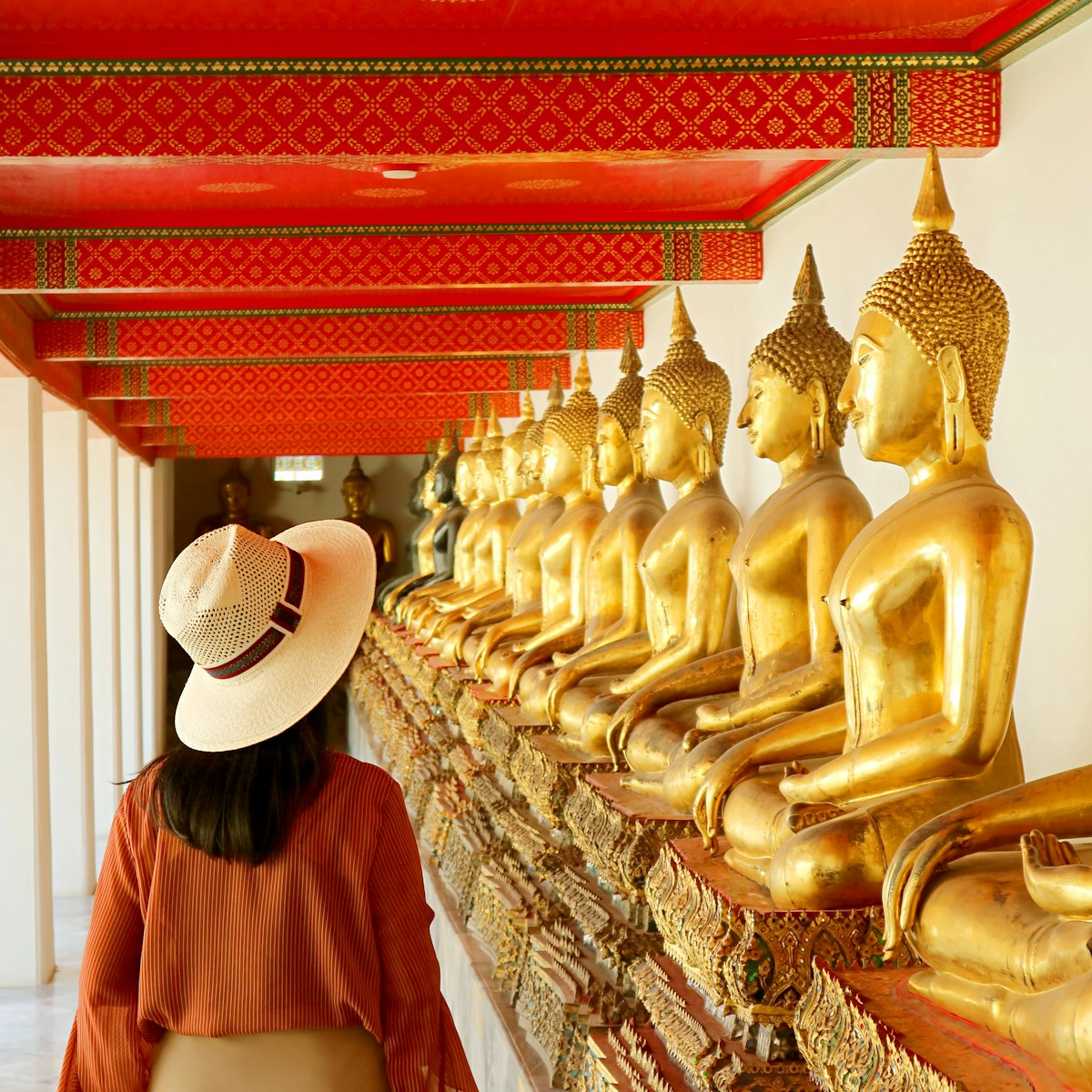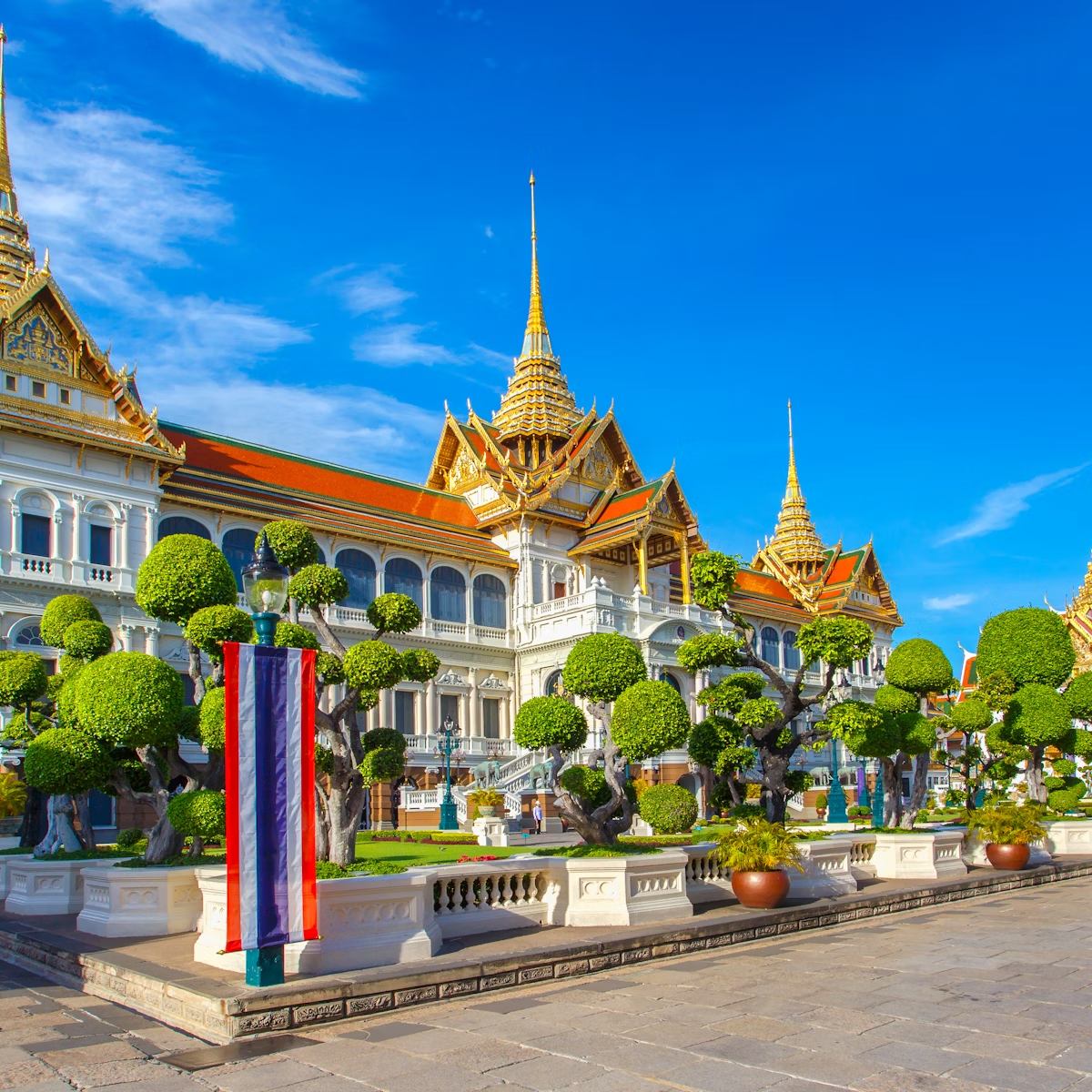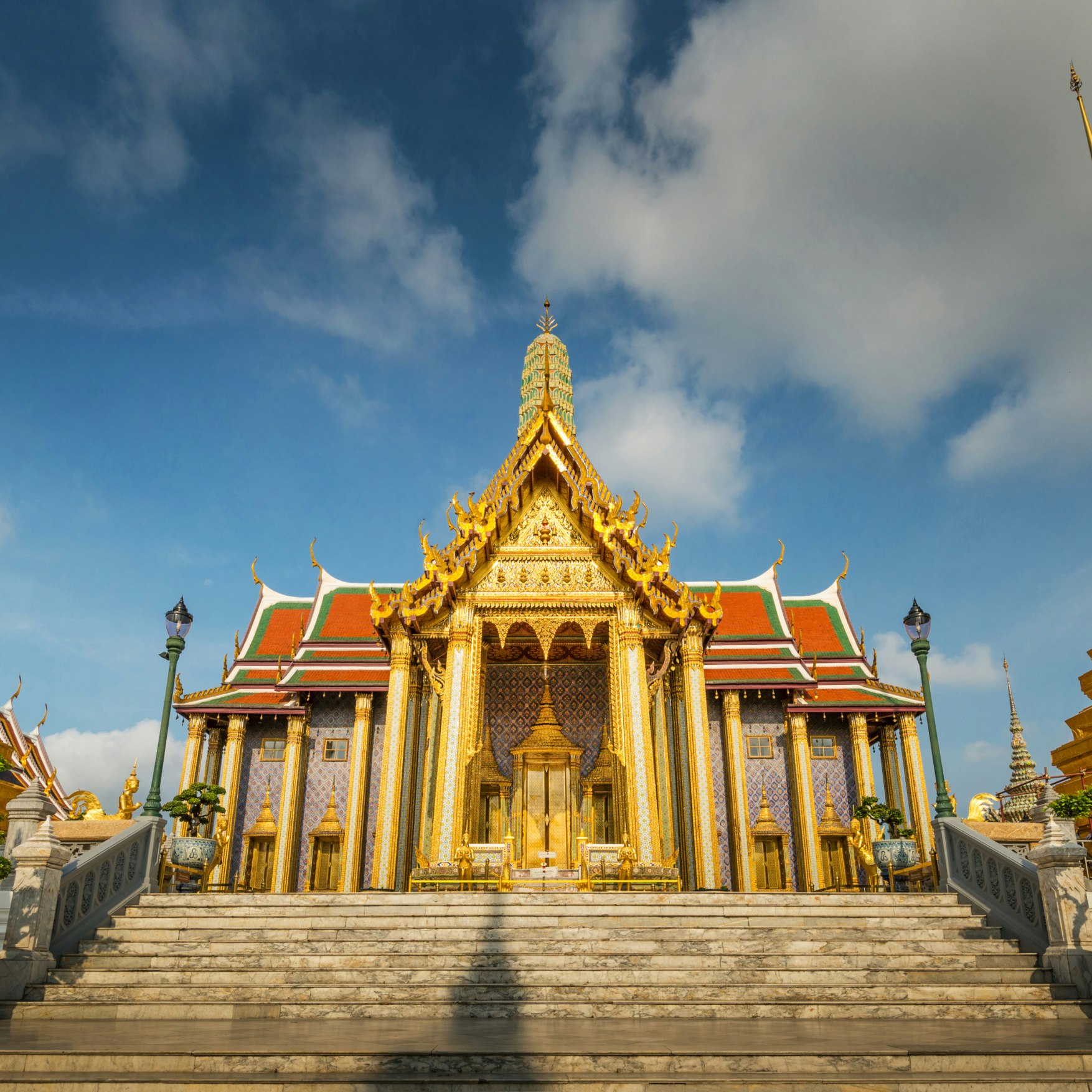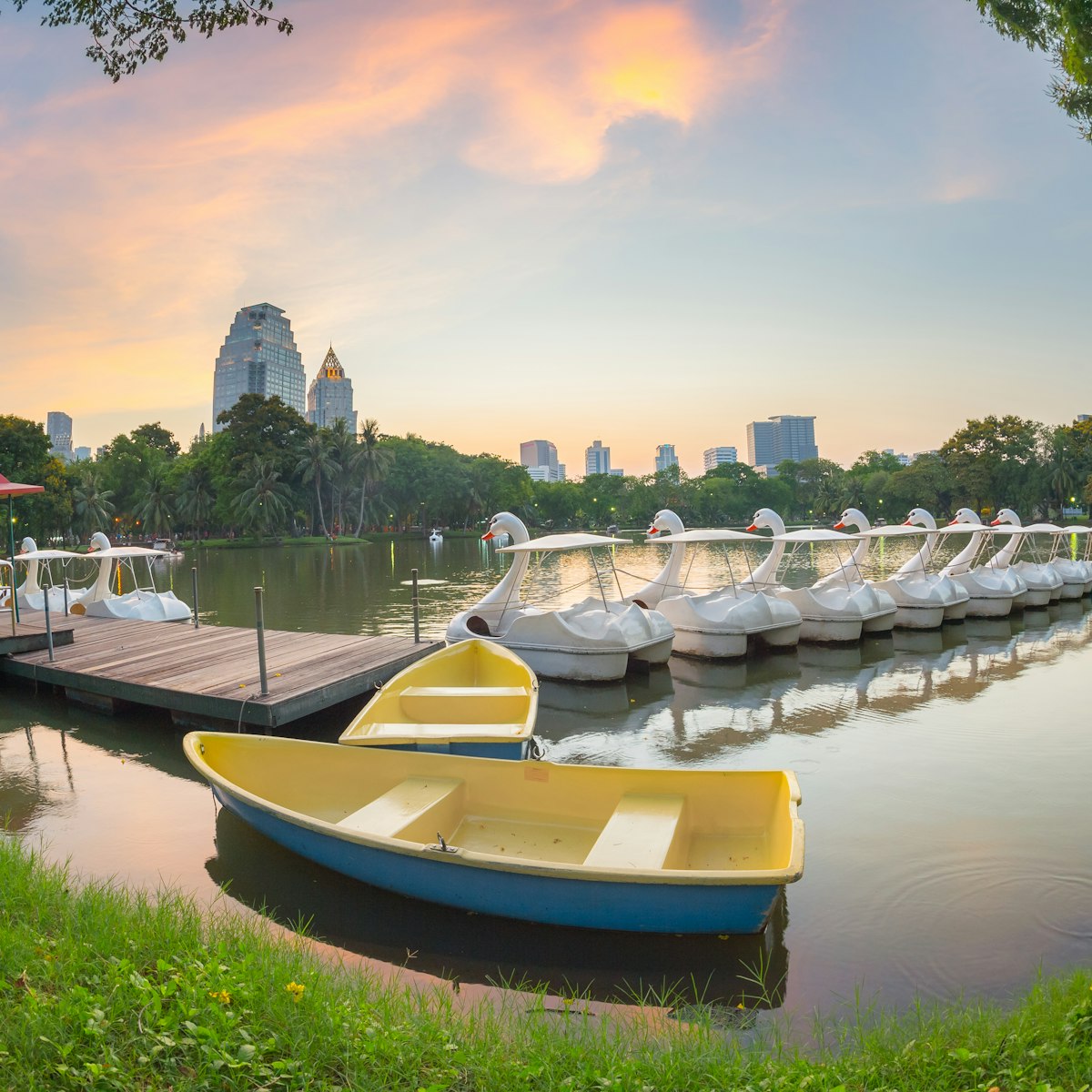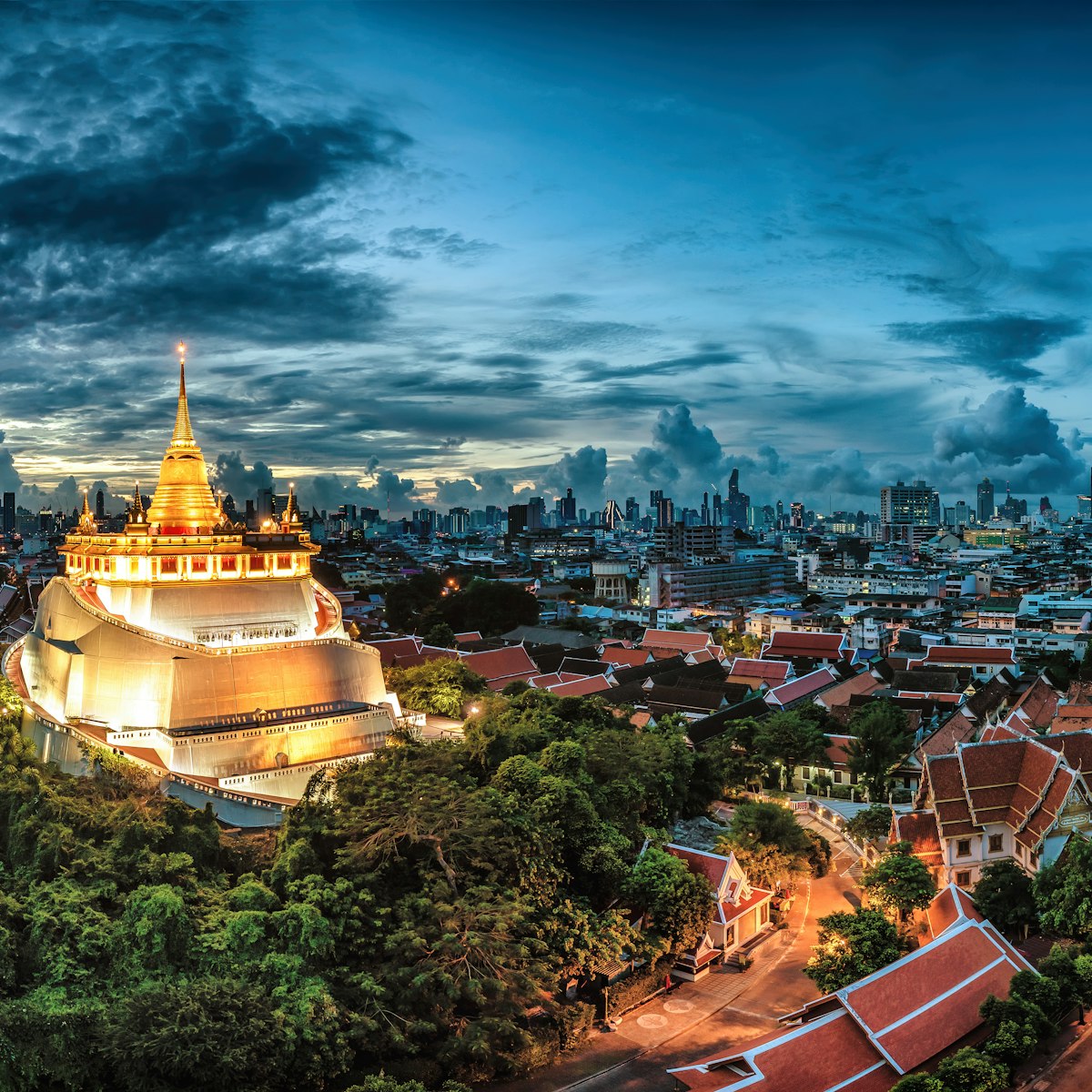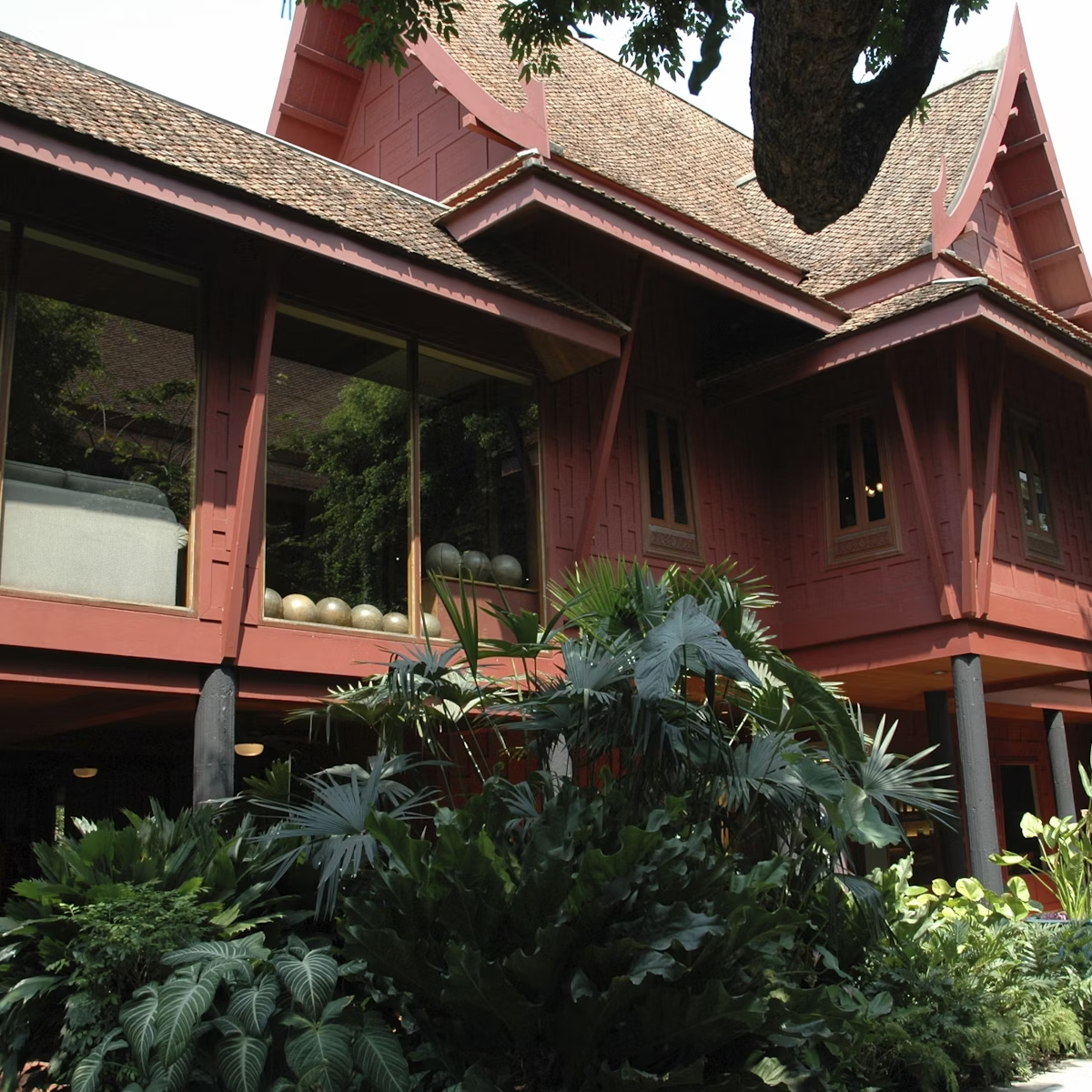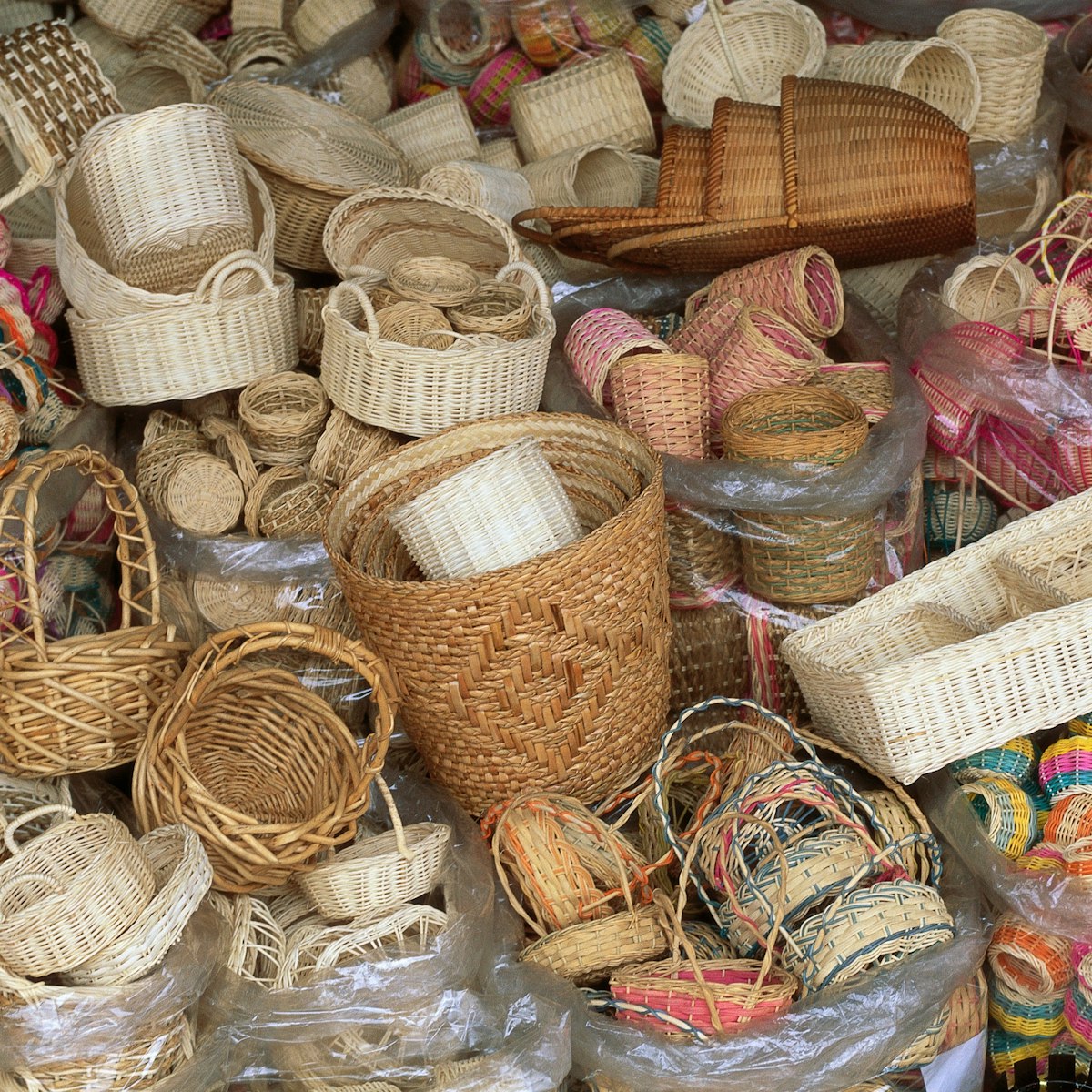Following his first European tour in 1897, Rama V (King Chulalongkorn; r 1868–1910) returned with visions of European castles and set about transforming these styles into a uniquely Thai expression that resulted in today's Dusit Palace Park, a royal complex with several notable pavilions and museums. At the time of research, the premises were temporarily closed for renovations, with no confirmed reopening date.
Originally constructed on Ko Si Chang in 1868 and moved to the present site in 1910, Vimanmek Teak Mansion contains 81 rooms, halls and anterooms, and is said to be the world's largest golden-teak building, allegedly built without the use of a single nail. The mansion was the first permanent building on the Dusit Palace grounds, and served as Rama V's residence in the early 20th century. The interior of the mansion contains various personal effects of the king and a treasure trove of early Ratanakosin-era art objects and antiques. Compulsory tours (in English) leave every 30 minutes between 9.45am and 3.15pm, and last about an hour.
The nearby Ancient Cloth Museum presents a beautiful collection of traditional silks and cottons that make up the royal cloth collection.
Originally built as a throne hall for Rama V in 1904, the smaller Abhisek Dusit Throne Hall is typical of the finer architecture of the era. Victorian-influenced gingerbread architecture and Moorish porticoes blend to create a striking and distinctly Thai exterior. The hall houses an excellent display of regional handiwork crafted by members of the Promotion of Supplementary Occupations & Related Techniques (Support) foundation, a charity organisation sponsored by Queen Sirikit.
Near the Th U Thong Nai entrance, two large stables that once housed three white elephants – animals whose auspicious albinism automatically make them crown property – now form the Royal Thai Elephant Museum. One of the structures contains artefacts and photos outlining the importance of elephants in Thai history and explaining their various rankings according to physical characteristics. The second stable holds a life-sized model of the previous king's first royal white elephant. Draped in royal vestments, the statue is more or less treated as a shrine by the visiting Thai public.
Because this is royal property, visitors should wear shirts with sleeves and long pants (no cropped pants) or long skirts.

